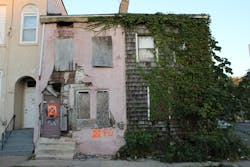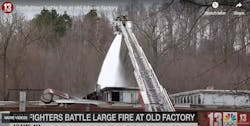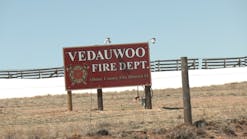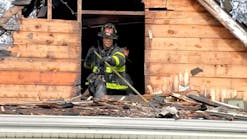With the economic decline over the last several years and subsequent rise of homelessness, we are seeing an increase in the number of hazardous vacant, abandoned and dilapidated structures in our urban and industrial areas.
These structures are usually taken over by vagrants, vandals, gang members, drug users and even copper thieves. The boarded-up doors and windows are no match for squatters who easily remove the board-ups and occupy these abandoned buildings. The age and neglect of these structures are further damaged by weather, especially in the Northeast, where rain and snow penetrate open doors, windows and roofs. When occupied by squatters, these buildings are often loaded with combustible trash and clothing, and are targets for arsonists and thieves who steal aluminum siding, copper pipes, furnaces etc. Others use the building for shelter during freezing weather and often start small fires inside for heat. These buildings are becoming death traps for firefighters across the country.
According to an NFPA report on vacant building fires, more firefighters are injured in vacant buildings than any other property. There are many hazards that contribute to those statistics, including delayed discovery, holes in the floors, missing stairs, hoarding conditions and collapse risks, to name a few.
With this in mind, it’s important that these buildings be marked to identify them as hazardous—and fire departments can lead the way in this effort. While engaged in driver training or while returning from a call, take notice of these buildings so your team can go back and inspect them. Go out into your first-due on a training day and look for these buildings to which your company members will be responding. A placard and a can of spray paint is an inexpensive way to identify these death traps and just may save the life of a firefighter someday.
The International Fire Code (IFC) provides a guideline for marking vacant structures. Your department may have a standard operating guideline (SOG) or procedure (SOP) that provides similar information.
- A placard with an open square: Normal structural conditions at time of inspection.
- A placard with a single diagonal slash: There are interior hazards to the building and interior operations should only be considered with extreme caution.
- A placard with an “X” in the square: Significant structural deficiencies in the building. Firefighters should only engage in exterior firefighting operations UNLESS a known life hazard exists.
Other marking systems offer additional identification, such as “R/O” (roof open) or “F/O” (floor open).
The buildings pictured were all identified in just a two-block radius in a city with over 6,000 vacant structures per 7.5 square miles.
In sum
Mark these dangerous buildings according to your SOPs/SOGs and stay safe!
References
Brian Butler
Brian Butler is a fire captain in the city of Trenton, NJ, where he has worked for 21 years. He is a member of King of Prussia, PA, Fire Rescue in suburban Philadelphia. Butler serves as a rescue/hazmat technician with the Southeastern (Montgomery County, PA) Regional Technical Rescue Task Force and the Bucks County, PA, Hazmat Response Team, and is a level 2 fire instructor. He is the






